Political campaigns have undergone a profound transformation throughout history, adapting to changes in technology, society, and communication. From the grassroots efforts of yesteryears to the highly sophisticated and data-driven campaigns of today, the evolution of political campaigns reflects broader societal shifts and advancements. This article delves into the key milestones and changes that have shaped political campaigns over time.
Early Campaigns: Personal Connection and Localized Efforts
In the early days of democracy, political campaigns were characterized by a strong personal connection between candidates and voters. Campaigns were often localized, relying on face-to-face interactions, public speeches, and pamphlets. Personal charisma and community ties played a crucial role in gaining public support. The advent of printing technology in the 19th century allowed for the mass distribution of campaign materials, expanding the reach of political messages.
The Rise of Mass Media: Radio and Television
The 20th century saw a significant shift with the rise of mass media. Radio became a powerful tool for political communication, allowing candidates to reach a broader audience. Franklin D. Roosevelt’s “fireside chats” during the 1930s are a notable example. However, it was the introduction of television that truly revolutionized political campaigns. The televised debates between John F. Kennedy and Richard Nixon in 1960 highlighted the impact of visual appeal on public perception and set a precedent for future campaigns.
The Digital Age: Internet and Social Media
The late 20th century and the dawn of the 21st century brought about the digital revolution, transforming the landscape of political campaigning. The internet became a new battleground, enabling candidates to disseminate information, engage with voters, and fundraise online. Howard Dean’s 2004 presidential campaign is often cited as an early example of leveraging the internet for grassroots organizing and fundraising.
The real game-changer, however, has been the advent of social media. Platforms like Facebook, Twitter, and Instagram have become integral to political campaigns, providing a direct and immediate channel for communication. Candidates can now engage with voters in real-time, share their messages, and mobilize supporters with unprecedented speed and efficiency. Social media has also given rise to new challenges, such as the spread of misinformation and the manipulation of public opinion through targeted advertising.
Data Analytics and Microtargeting
In recent years, political campaigns have become increasingly sophisticated in their use of data analytics. The collection and analysis of vast amounts of data allow campaigns to identify and target specific demographics with tailored messages. Microtargeting has become a powerful tool, enabling campaigns to customize their outreach strategies based on individual voter preferences, behaviors, and beliefs. This level of precision has raised concerns about privacy and the ethical use of personal data in political campaigns.
Grassroots Movements and Citizen Empowerment
While technology has played a crucial role in shaping modern political campaigns, there has also been a resurgence of grassroots movements and citizen empowerment. Online platforms have facilitated the organization of grassroots campaigns, allowing activists to mobilize and coordinate efforts on a global scale. Social media has been instrumental in amplifying the voices of marginalized groups and facilitating bottom-up movements, challenging traditional power structures.
Conclusion
The evolution of political campaigns reflects the broader evolution of society, technology, and communication. From the personal connections of early campaigns to the data-driven, digitally infused strategies of today, political campaigns continue to adapt to the changing landscape. As technology continues to advance, and societal norms shift, the future of political campaigns will likely be shaped by new innovations, challenges, and the ongoing quest for an engaged and informed electorate.

